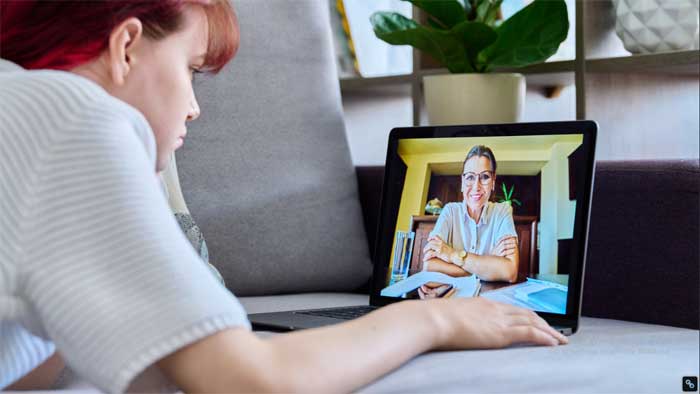
In today’s fast-paced and digitally-driven world, mental health issues are becoming increasingly prevalent. The traditional face-to-face therapy approach is effective, but it may not always be accessible or convenient for everyone. Thankfully, advancements in technology have opened up new avenues for mental health support. One such innovation is video-based therapy, which offers a range of benefits and has the potential to revolutionize the field of mental health. Here, we will explore the therapeutic potential of video-based therapy and how it can promote mental well-being.
The Evolution of Therapy
Over the years, therapy has evolved from traditional in-person sessions to various digital platforms. Video-based therapy utilizes real-time video conferencing technology to connect mental health professionals with clients. This mode of therapy harnesses the power of technology to overcome geographical barriers and offer a convenient alternative to traditional face-to-face sessions.
Understanding Video-Based Therapy
Video-based therapy, also known as teletherapy or online counseling, refers to the provision of mental health services through videoconferencing platforms. It enables individuals to receive therapeutic support from the comfort of their own homes, eliminating the need for in-person visits to a therapist’s office. This mode of therapy encompasses various approaches, including individual counseling, group therapy, and even psychiatric consultations.
Overcoming Geographical Barriers
One of the significant advantages of video-based therapy is its ability to overcome geographical barriers. In traditional therapy settings, individuals living in remote areas or with limited access to mental health services may face challenges in seeking help. Video-based therapy eliminates these obstacles by connecting clients with qualified professionals regardless of their physical location. This aspect of therapy opens doors to individuals who may have otherwise been unable to access mental health support.
Accessibility and Convenience
Video-based therapy offers unparalleled accessibility and convenience. Clients can schedule therapy sessions at their preferred time and engage in therapy from the comfort of their own homes. This flexibility reduces the need for extensive travel, time off from work, or other logistical challenges that often hinder individuals from seeking therapy. By making therapy more accessible and convenient, video-based therapy encourages people to prioritize their mental well-being.
Enhancing Therapeutic Relationships
Building a strong therapeutic relationship is vital for effective therapy outcomes. Despite the physical separation, video-based therapy has been found to foster meaningful connections between therapists and clients. Through videoconferencing, therapists can observe non-verbal cues, facial expressions, and body language, allowing them to better understand their clients’ emotions and tailor their therapeutic approach accordingly. The ability to establish a genuine connection in the digital realm contributes to positive treatment outcomes.
Empowering Clients Through Self-Expression
Video-based therapy provides clients with a unique opportunity for self-expression. Some individuals may find it easier to open up about their thoughts and feelings in a virtual setting rather than in face-to-face interactions. The sense of anonymity and distance can reduce inhibitions and facilitate self-disclosure. Clients can express themselves freely and explore their emotions with the support of their therapist, ultimately leading to personal growth and improved mental well-being.
Addressing Stigma and Promoting Privacy
For many individuals, seeking therapy can be accompanied by a sense of stigma or fear of judgment from others. Video-based therapy offers a solution by ensuring privacy and confidentiality. The clients privacy in this mode can encourage more people to seek therapy without the fear of social repercussions, thus promoting mental health on a broader scale.
Cultivating Cultural Sensitivity
Clients from diverse cultural backgrounds can connect with therapists who understand their unique perspectives and experiences. Video-based therapy allows for the inclusion of therapists from various geographical regions, offering clients the opportunity to work with professionals who share their cultural values and can provide culturally competent care.
Broadening Reach and Impact
The scalability of being able to serve a larger client base for medico professionals enhances the overall impact of mental health interventions and contributes to the promotion of well-being on a global scale.
Effectiveness of Video-Based Therapy
Several studies have shown that video-based therapy is useful for various types of mental health conditions. Research indicates that it can be as effective as in-person therapy in treating conditions such as depression, anxiety disorders, post-traumatic stress disorder (PTSD), and more. Therapists can create motivating videos & edit it using a video editor tool to make it more personalized & relatable to keep clients engaged. The convenience and accessibility offered by video-based therapy enable individuals to engage in consistent and regular therapy, which is crucial for positive treatment outcomes.
Considerations for Ethics
It is also important to know the ethical considerations and adhere to guidelines for people involved in the mode of therapy. Confidentiality, privacy, informed consent, and technological security are some of the key areas that require attention. Mental health professionals engaging in video-based therapy should follow ethical guidelines specific to their jurisdiction and professional organizations to maintain the highest standards of care.
Potential Limitations and Concerns
While video-based therapy offers numerous advantages, it is essential to acknowledge its potential limitations and concerns. Technical issues, such as poor internet connection or video/audio quality, can disrupt the flow of therapy sessions. Additionally, certain therapeutic modalities may not be as suitable for remote delivery, requiring alternative approaches or a hybrid model of care.

Lifebing is driven by an unrelenting passion for promoting health and well-being, our team is wholly committed to curating exceptional content and immersive experiences.
